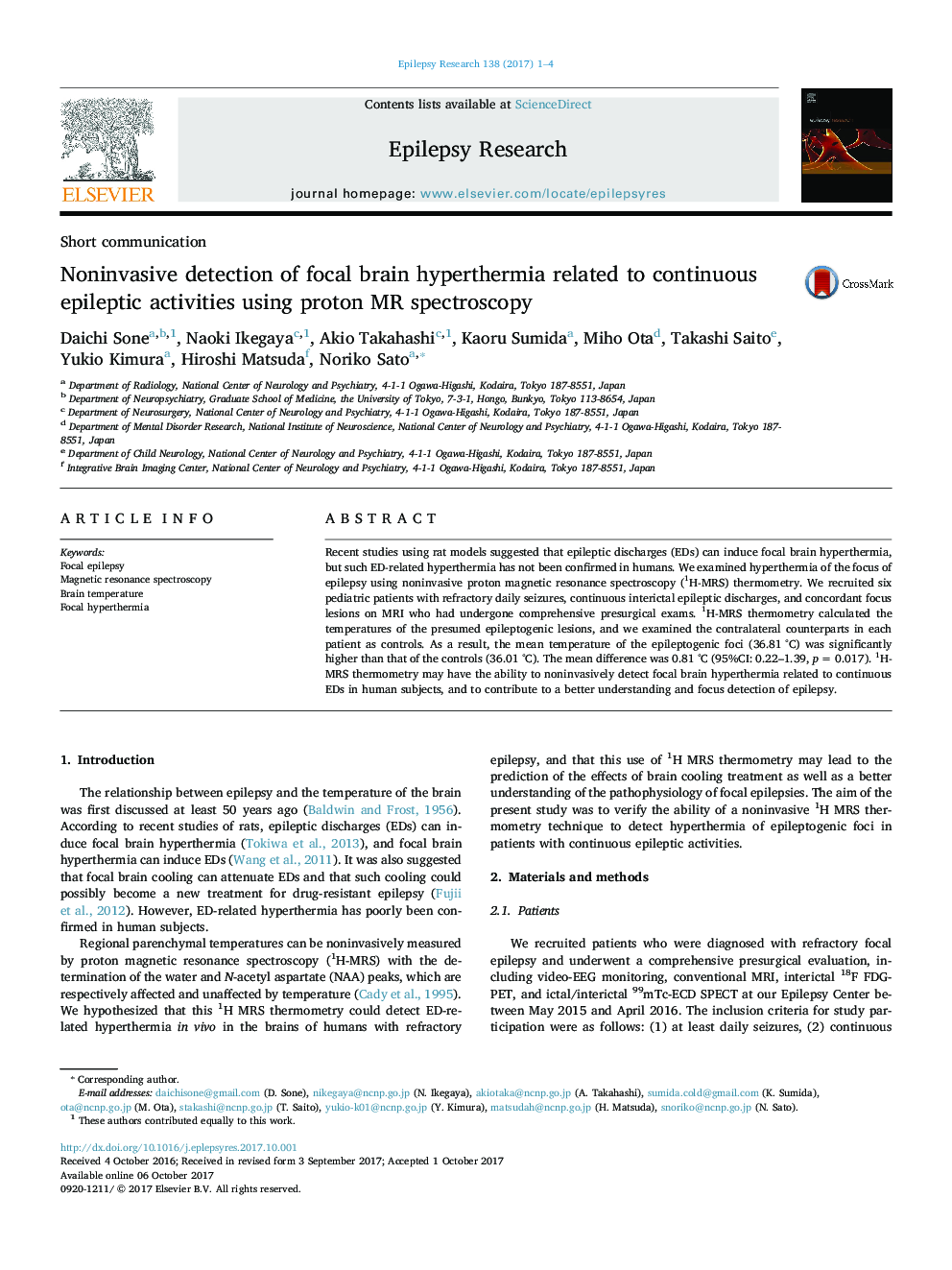| Article ID | Journal | Published Year | Pages | File Type |
|---|---|---|---|---|
| 5628545 | Epilepsy Research | 2017 | 4 Pages |
â¢Epileptic discharges (EDs) can induce focal brain hyperthermia.â¢We examined EDs-induced focal brain hyperthermia using proton MRS thermometry.â¢We recruited six patients with continuous interictal EDs and focus lesions on MRI.â¢1H-MRS calculated the temperatures of the lesions and contralateral counterparts.â¢The mean temperature of the epileptogenic foci was significantly higher.
Recent studies using rat models suggested that epileptic discharges (EDs) can induce focal brain hyperthermia, but such ED-related hyperthermia has not been confirmed in humans. We examined hyperthermia of the focus of epilepsy using noninvasive proton magnetic resonance spectroscopy (1H-MRS) thermometry. We recruited six pediatric patients with refractory daily seizures, continuous interictal epileptic discharges, and concordant focus lesions on MRI who had undergone comprehensive presurgical exams. 1H-MRS thermometry calculated the temperatures of the presumed epileptogenic lesions, and we examined the contralateral counterparts in each patient as controls. As a result, the mean temperature of the epileptogenic foci (36.81 °C) was significantly higher than that of the controls (36.01 °C). The mean difference was 0.81 °C (95%CI: 0.22-1.39, p = 0.017). 1H-MRS thermometry may have the ability to noninvasively detect focal brain hyperthermia related to continuous EDs in human subjects, and to contribute to a better understanding and focus detection of epilepsy.
